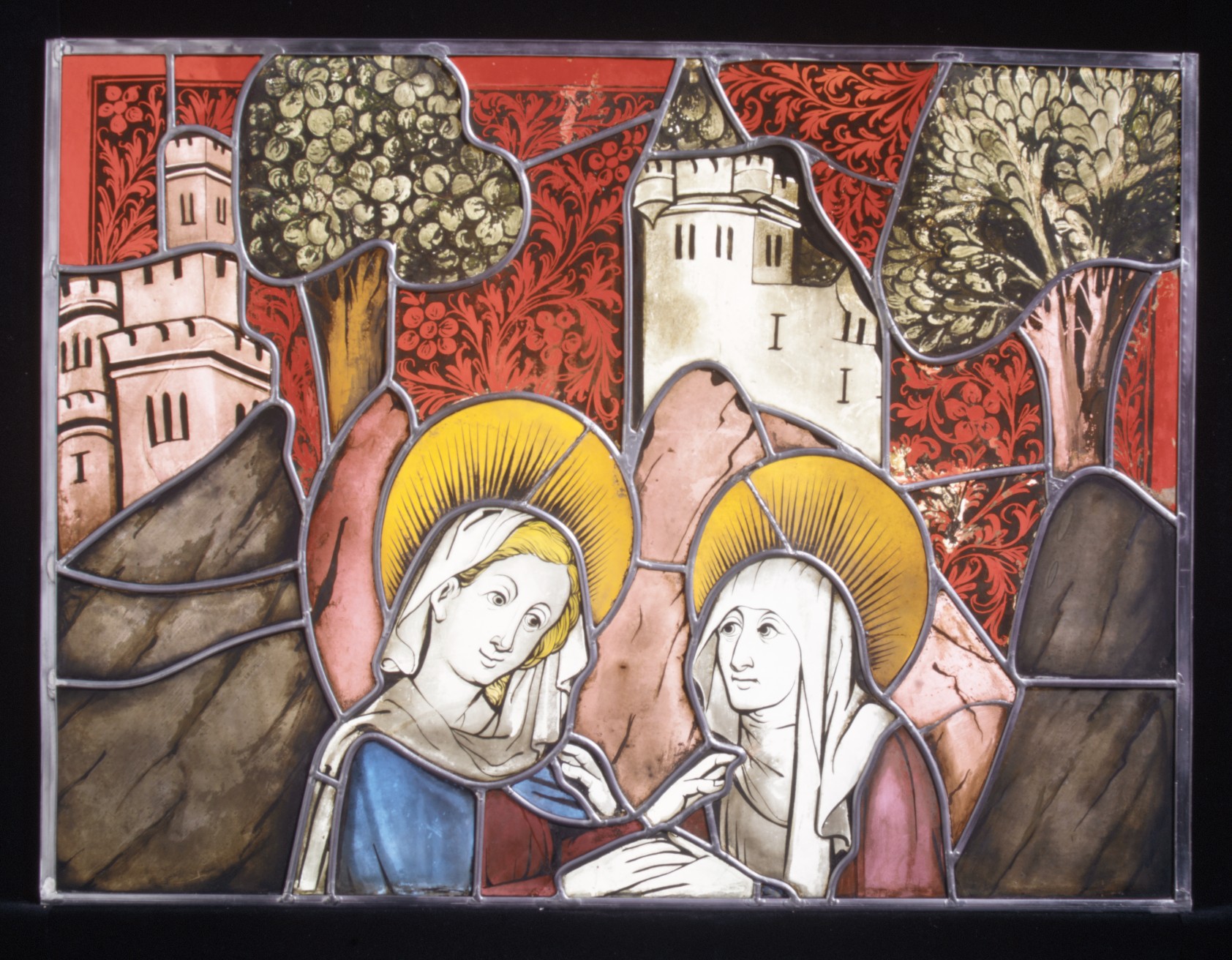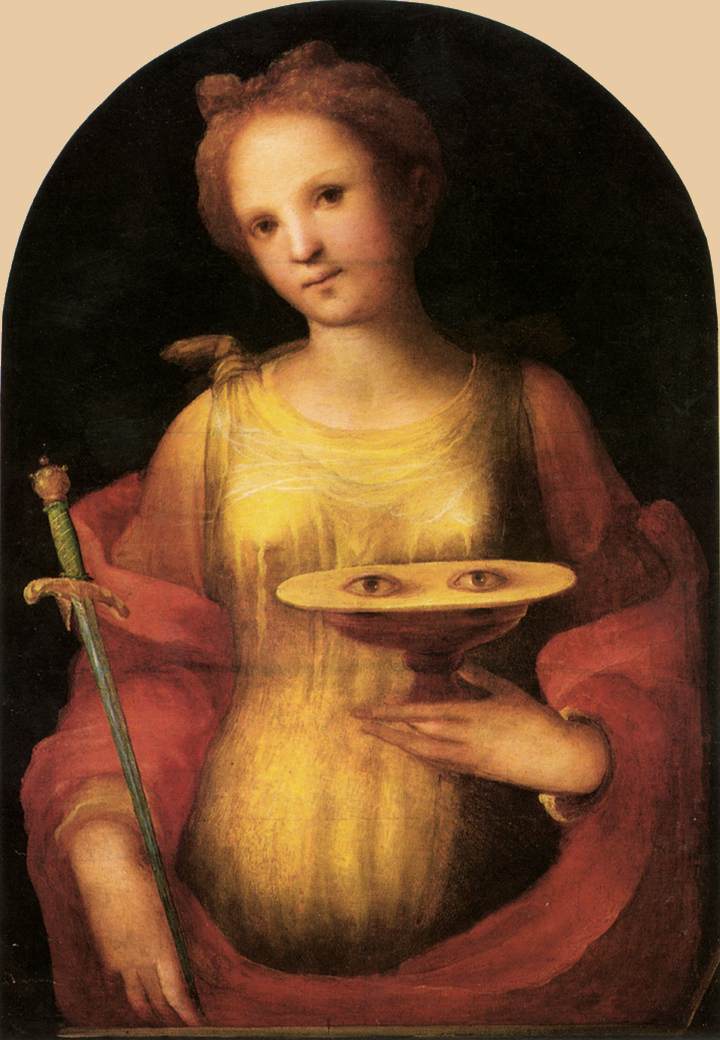|
Church Of Sant Llorenç, Lleida
Sant Llorenç (Saint Lawrence) is a romanesque architecture, Romanesque church (building), church in Lleida (Catalonia, Spain) dating from the late 12th century, with gothic architecture, Gothic additions from the 15th century. The initial architects of the church were Pere de Coma, the master of works who in charge of La Seu Vella, the old cathedral of Lleida. It has a nave and two aisles, built with the same height, and three apses; the nave is in the Romanesque style, whereas the aisles are Gothic, as is the octagonal bell tower. In 2002 part of the church was refurbished. Works of art It contains four imposing altarpieces: Saint Lawrence, Saint Ursula (attributed to Jaume Cascalls), Saint Peter and Saint Lucy. One of the two entrances, on Plaça de Sant Josep, Lleida, Plaça de Sant Josep, can be seen the family crest of Berenguer de Gallart. The church has been Lleida's episcopal see twice during its existence. Among the works of art inside Sant Llorenç there are a Gothic p ... [...More Info...] [...Related Items...] OR: [Wikipedia] [Google] [Baidu] |
Iglesia De San Lorenzo
Iglesia may refer to: * Iglesia, the Spanish form of church * Iglesia Department * Iglesia ni Cristo * Iglesia Filipina Independiente The Philippine Independent Church (; ), officially referred to by its Philippine Spanish name (IFI) and colloquially called the Aglipayan Church, is an Independent Catholic, independent catholic Christian denomination, in the form of a Religi ... * Iglesia (Metro Madrid), a station on Line 1 {{disambiguation ... [...More Info...] [...Related Items...] OR: [Wikipedia] [Google] [Baidu] |
Bell Tower
A bell tower is a tower that contains one or more bells, or that is designed to hold bells even if it has none. Such a tower commonly serves as part of a Christian church, and will contain church bells, but there are also many secular bell towers, often part of a municipal building, an educational establishment, or a tower built specifically to house a carillon. Church bell towers often incorporate clocks, and secular towers usually do, as a public service. The term campanile (, also , ), from the Italian ''campanile'', which in turn derives from ''campana'', meaning "bell", is synonymous with ''bell tower''; though in English usage campanile tends to be used to refer to a free standing bell tower. A bell tower may also in some traditions be called a belfry, though this term may also refer specifically to the substructure that houses the bells and the ringers rather than the complete tower. The tallest free-standing bell tower in the world, high, is the Mortegliano Bell To ... [...More Info...] [...Related Items...] OR: [Wikipedia] [Google] [Baidu] |
Buildings And Structures In Lleida
A building or edifice is an enclosed structure with a roof, walls and windows, usually standing permanently in one place, such as a house or factory. Buildings come in a variety of sizes, shapes, and functions, and have been adapted throughout history for numerous factors, from building materials available, to weather conditions, land prices, ground conditions, specific uses, prestige, and aesthetic reasons. To better understand the concept, see ''Nonbuilding structure'' for contrast. Buildings serve several societal needs – occupancy, primarily as shelter from weather, security, living space, privacy, to store belongings, and to comfortably live and work. A building as a shelter represents a physical separation of the human habitat (a place of comfort and safety) from the ''outside'' (a place that may be harsh and harmful at times). buildings have been objects or canvasses of much artistic expression. In recent years, interest in sustainable planning and building pr ... [...More Info...] [...Related Items...] OR: [Wikipedia] [Google] [Baidu] |
Churches In Catalonia
Church may refer to: Religion * Church (building), a place/building for Christian religious activities and praying * Church (congregation), a local congregation of a Christian denomination * Church service, a formalized period of Christian communal worship * Christian denomination, a Christian organization with distinct doctrine and practice * Christian Church, either the collective body of all Christian believers, or early Christianity Places United Kingdom * Church, a former electoral ward of Kensington and Chelsea London Borough Council that existed from 1964 to 2002 * Church (Liverpool ward), a Liverpool City Council ward * Church (Reading ward), a Reading Borough Council ward * Church (Sefton ward), a Metropolitan Borough of Sefton ward * Church, Lancashire, England United States * Church, Iowa, an unincorporated community * Church Lake, a lake in Minnesota * Church, Michigan, ghost town Arts, entertainment, and media * '' Church magazine'', a pastoral theology magazin ... [...More Info...] [...Related Items...] OR: [Wikipedia] [Google] [Baidu] |
Mare De Déu Dels Fillols
A mare is an adult female horse or other equine. In most cases, a mare is a female horse over the age of three, and a filly is a female horse three and younger. In Thoroughbred horse racing, a mare is defined as a female horse more than four years old. The word can also be used for other female equine animals, particularly mules and zebras, but a female donkey is usually called a "jenny". A ''broodmare'' is a mare used for breeding. Reproductive cycle Mares carry their young (called foals) for approximately 11 months from conception to birth, the average range being 320–370 days.Ensminger, M. E. ''Horses and Horsemanship: Animal Agriculture Series.'' Sixth Edition. Interstate Publishers, 1990. p. 156 Usually just one young is born; twins are rare. When a domesticated mare foals, she nurses the foal for at least four to six months before it is weaned, though mares in the wild may allow a foal to nurse for up to a year. The estrous cycle, also known as "season" or "heat" ... [...More Info...] [...Related Items...] OR: [Wikipedia] [Google] [Baidu] |
Gothic Painting
Gothic art was a style of medieval art that developed in Northern France out of Romanesque art in the 12th century, led by the concurrent development of Gothic architecture. It spread to all of Western Europe, and much of Northern, Southern and Central Europe, never quite effacing more classical styles in Italy. In the late 14th century, the sophisticated court style of International Gothic developed, which continued to evolve until the late 15th century. In many areas, especially Germany, Late Gothic art continued well into the 16th century, before being subsumed into Renaissance art. Primary media in the Gothic period included sculpture, panel painting, stained glass, fresco and illuminated manuscripts. The easily recognisable shifts in architecture from Romanesque to Gothic, and Gothic to Renaissance styles, are typically used to define the periods in art in all media, although in many ways figurative art developed at a different pace. The earliest Gothic art was monumental ... [...More Info...] [...Related Items...] OR: [Wikipedia] [Google] [Baidu] |
Episcopal See
An episcopal see is the area of a bishop's ecclesiastical jurisdiction. Phrases concerning actions occurring within or outside an episcopal see are indicative of the geographical significance of the term, making it synonymous with ''diocese''. The word ''see'' is derived from Latin , which in its original or proper sense denotes the seat or chair that, in the case of a bishop, is the earliest symbol of the bishop's authority. This symbolic chair is also known as the bishop's . The church in which it is placed is for that reason called the bishop's cathedral, from Latin , meaning the 'church of the '. The word ''throne'' is also used, especially in the Eastern Orthodox Church, both for the chair and for the area of ecclesiastical jurisdiction. The term ''see'' is also used of the town where the cathedral or the bishop's residence is located. Catholic Church Within Catholicism, each diocese is considered to be a see unto itself with a certain allegiance to the See of Rome. ... [...More Info...] [...Related Items...] OR: [Wikipedia] [Google] [Baidu] |
Berenguer De Gallart
Berengar is a masculine name derived from Germanic roots meaning "bear" and "spear". The name appears frequently among certain noble families during the Middle Ages, especially the Unruochings and those related. Bérenger is the French form, while Berengario is the Italian form, Berenguer is the Catalan form, and Berenguier or Berengier is the Occitan form. The Latin form is ''Berengarius'' and the female equivalent is '' Berengaria''. Other forms of the name include Berenger, Bérenger, Bérangier, or Beringer. Personal name *Berengar of Toulouse, Frankish nobleman (fl. ninth century) *Berengar I of Neustria, Frankish nobleman (fl. ninth century) *Berengar II of Neustria, Frankish nobleman (d. 896) *Berengar I of Italy, King of Italy (c. 845–924) *Berengar II of Italy, King of Italy (c. 900–966) *Judicael Berengar, Breton nobleman (fl. tenth century) *Berengar of Tours, theologian (c. 999–1088) *Berengar (bishop of Venosa) (fl. eleventh century) *Berengar of Poitiers (fl. ... [...More Info...] [...Related Items...] OR: [Wikipedia] [Google] [Baidu] |
Saint Lucy
Lucia of Syracuse ( – 304 AD), also called Saint Lucia () and better known as Saint Lucy, was a Roman people, Roman Christian martyr who died during the Diocletianic Persecution. She is venerated as a saint in Catholic Church, Catholic, Anglicanism, Anglican, Lutheranism, Lutheran, Eastern Orthodox Church, Eastern Orthodox and Oriental Orthodox Church, Oriental Orthodox Christianity. She is one of eight women (including Mary, mother of Jesus, the Virgin Mary) explicitly commemorated by Catholics in the Canon of the Mass. Her traditional feast day, known in Europe as Saint Lucy's Day, is observed by Western Christianity, Western Christians on 13 December. Lucia of Syracuse was honored in the Middle Ages and remained a well-known saint in early modern England. She is one of the best known virgin martyrs, along with Agatha of Sicily, Agnes of Rome, Saint Cecilia, Cecilia of Rome, and Catherine of Alexandria. Sources The oldest record of her story comes from the fifth-century ''A ... [...More Info...] [...Related Items...] OR: [Wikipedia] [Google] [Baidu] |
Saint Peter
Saint Peter (born Shimon Bar Yonah; 1 BC – AD 64/68), also known as Peter the Apostle, Simon Peter, Simeon, Simon, or Cephas, was one of the Twelve Apostles of Jesus and one of the first leaders of the Jewish Christian#Jerusalem ekklēsia, early Christian Church. He appears repeatedly and prominently in Gospel#Canonical gospels, all four New Testament gospels, as well as the Acts of the Apostles. Catholic Church, Catholic and Eastern Orthodoxy, Orthodox tradition treats Peter as the first bishop of Rome – or List of popes, pope – and also as the first bishop of Antioch. Peter's History of the papacy, leadership of the early believers is estimated to have spanned from AD 30 or 33 to his death; these dates suggest that he could have been the longest-reigning pope, for anywhere from 31 to 38 years; however, this has never been verified. According to Apostolic Age, Christian tradition, Peter was crucified in Rome under Emperor Nero. The ancient Christian churches all venera ... [...More Info...] [...Related Items...] OR: [Wikipedia] [Google] [Baidu] |
Jaume Cascalls
Jaume Cascalls (early 14th century – 1378) was a Catalan sculptor, born in Berga. He was a representative of the Catalan school of Gothic sculpture. He was married to the daughter of painter Ferrer Bassa, with whom he had a profitable work relationship. Cascalls' oldest known work is a white marble altarpiece in the church of St. Mary at Corneilla-de-Conflent (in what is now southern France), dated and signed 1345. His most extensive work was however a series of sepulchres in the Monastery of Poblet, where he started to work in 1349 along with the master Aloi de Montbrai; the work prolonged for many years due to the numerous modifications required by King Peter I of Aragon. Cascalls left Poblet when he was appointed director of the construction of the La Seu Vella cathedral in Lleida Lleida (, ; ; '' see below'') is a city in the west of Catalonia, Spain. It is the capital and largest town in Segrià county, the Ponent region and the province of Lleida. Geograph ... [...More Info...] [...Related Items...] OR: [Wikipedia] [Google] [Baidu] |





